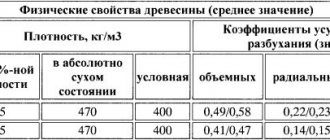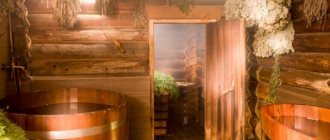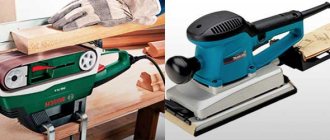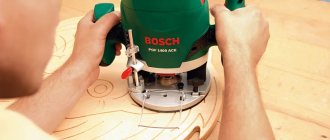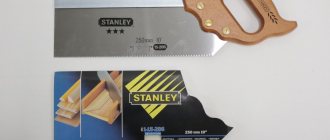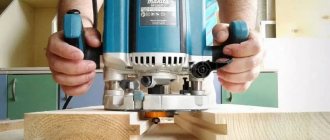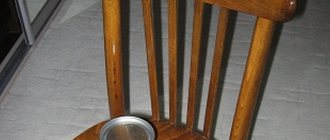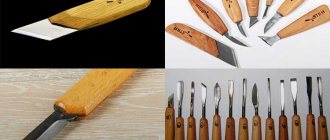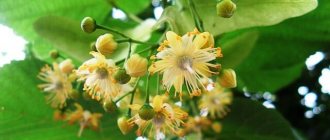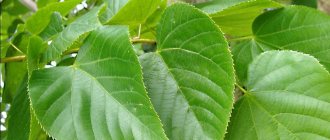Articles
All photos from the article
Wood carving is a rather complex type of decorative art. Moreover, the final result depends not only on the skills of the master, but also on many other factors, in particular, the quality of the wood plays an important role. Below we will look at what kind of wood professional carvers use for wood carving.
Wood carving
Linden vs Aspen, or what to choose for wood carving practice
Relatively recently (about a month ago) I started mastering geometric wood carving or chip carving. Naturally, after purchasing the tool, the question arose - what to actually cut with? All sources on this type of carving were very adamant - linden. Well, that's all for you and that's it. I found linden blanks at Leonardo, not all of them are of high quality, many are bent or even twisted (the actual wood stored on an open shelf in a store is generally nonsense). It seems that the cost is small - 73 rubles. for a workpiece measuring 100x250x15mm. At that time, I had not yet thought about how much daily practice would be required to master the skill. Having cut a couple of such blanks in one evening, I began to suspect something... Wood carving costs a pretty penny.
Then I remembered one funny episode. When I received the knives and brought them to the workshop, I immediately wanted to try them out, but there was only pine around, and I needed linden. And then my companion hands me a piece of board with the words: “So you have a piece of linden!” I look at this board, not understanding where it came from - I definitely didn’t buy linden boards! Then I remember that this piece of board is all that remains from my very first project. This was the first photo backdrop made at the request of my wife, and that’s where I started developing backgrounds. It was made not from linden, but from aspen. Actually, the boards were bought at Leroy Merlin; it seems they were shelves for finishing saunas. The background turned out like this:
Because of the nitro stain, it glared incredibly, and the texture of the aspen does not stand out too much. I tried cutting along the remaining piece - it turned out no worse than on a purebred linden tree! The background had been standing in a corner for a long time and had not been used for its intended purpose, since there were much better samples, so the wife was only in favor of recycling the background. I started working:
And finally, the time has come to compare linden and aspen. Actually, both trees have a monolithic structure, without a clearly defined texture of alternating summer-winter layers. This significantly reduces the likelihood of chipping when carving. Aspen is a little more textured than linden, but for practice it is quite suitable:
At the top there is a round piece of linden, at the bottom there is a rectangular piece of aspen. As you can see, there are differences, but not significant. True, one minus of aspen is knots and heterogeneity, like here:
But this is already a matter of selection when purchasing. And now about the good stuff... Price! Even in Leroy Merlin, a board 30x96x2000 costs 334 rubles. Calculate for yourself how much more profitable it is, the exact numbers didn’t bother me much, the main thing is that I got cheap material for practicing carving.
The importance of material quality
Not every wood is suitable for carving art. Since materials have different properties: moisture, strength, softness, flexibility, etc. Therefore, the choice of a specific option depends on:
- simplicity and speed of processing of workpieces;
- visual appeal of the product;
- the ability to make small and complex ornaments;
- durability of the product (figurines, furniture, etc.).
Which tree to choose with all the variety of species? The selection of a specific material is largely determined by the technique in which the master works.
So, for sculptural carvings, it is recommended to use durable wood species: oak, cedar, etc. And for relief or geometric carvings, it is recommended to use linden, birch and alder, which are soft and flexible.
Laminate and parquet
Block parquet, parquet boards and natural beech laminate cannot be cheap, but their use is justified by the long durability of such parquet flooring.
Beech parquet is distinguished by uniform patterns and calm external shades. Thanks to this quality, beech parquet is ideal for any decor in the apartment. Over time, the base color of beech parquet gradually becomes more saturated.
Individual beech tree trunks for more than two meters may not have knots. This quality of wood is especially valued in the manufacture of laminate. During special heat treatment, the wood is painted in different shades, which increases the demand for beech laminate.
This type of flooring looks great in living rooms, kitchens, and children's rooms. The environmental friendliness of rooms furnished with beech and products made from it can be rated five or more points. In such rooms it is easy to breathe and there are no foreign odors.
The main advantages of beech laminate include:
- Attractiveness of the surface - the texture of the beech laminate is represented by a pattern with heart-shaped sections.
- Possibility to choose the desired shade of coating.
- Experts also rate the ease of work required to produce beech laminate as five points.
- Beech flooring is characterized by warmth and high wear resistance, which ultimately leads to a long-lasting floor.
This is what beech laminate looks like in the photo
Basic beech lumber
Beech is used to produce edged and unedged boards, veneer, furniture panels, and plywood.
All these lumber are used for specific purposes:
- During manufacturing, edged boards This affects the color constancy and durability of the material. Edged boards are used as flooring, platbands, staircase elements, various massive cabinet furniture options, countertops and baseboards.
- Unedged boards cost less and are used for various cladding.
- In the production of furniture, special furniture panels . The pattern of the furniture board is weakly expressed; over time, the pinkish tint may darken.
Beech flooring is installed mainly from edged boards. This material is smooth, there are no splinters in it, and it can easily be polished and, if necessary, covered with paints and varnish. Beech flooring is warm, and special treatment prevents it from deteriorating under the influence of high humidity.
Photos of kitchens made of solid beech
Kitchen No. 1
Kitchen No. 2
Kitchen No. 3
Dry edged and unedged boards
The production of beech boards must be carried out in compliance with certain standards. Since this tree easily absorbs moisture, its processing after cutting should be carried out in a short time. Otherwise, the wood will warp and it will be difficult for it to give the desired shape. Edged beech board is easy to sand, it is durable and attractive in appearance.
These characteristics allow you to create interior interiors of apartments and your own houses. After proper processing, a beech board becomes somewhat stronger than an oak board and, thanks to this hardness, easily holds nails and screws in its fibers.
Experts do not recommend using beech boards for external cladding of houses or for arranging baths. Such wood does not change for the better under the influence of weather conditions and humidity; beech is not used as a material for insulating a house.
Beech furniture
In the production of various furniture, beech is used in different forms, that is, as ordinary wood, and also in the form of plywood or veneer. Beech wood, due to its high strength, is most often used for the manufacture of furniture surfaces that require high resistance to mechanical stress.
Therefore, beech wood is used for the production of office and public furniture. Most chairs are made from this wood. You can often find beds, desks, sofas, interior doors, wardrobes, armchairs, and kitchens made from solid beech. Beech wood is also used in furniture production for the manufacture of frames for various types of upholstered furniture.
The beautiful texture of beech trees and its light shades allow you to create furniture that is distinguished by elegance and restraint. Thanks to these qualities, beech furniture is widely used both in residential apartments and to create an appropriate environment in various public institutions.
Interior doors of various textures are also made from beech wood. The price of ordinary beech furniture is rated at five points. That is, the cost fully meets several criteria - appearance, strength and practicality.
In addition, beech wood is excellent for making children's furniture, in particular for cribs. They are particularly durable, environmentally friendly, practical and beautiful in appearance.
Photo of beech wood furniture
Bed
Furniture set
Cushioned furniture
Bedroom furniture set
Sofa bed
Plywood
Beech plywood is quite widespread, so it will not be difficult to purchase it in construction stores if necessary. Plywood is made by gluing a certain amount of veneer.
The main, sought-after qualities of beech plywood include:
- Flexibility. Beech plywood bends easily and does not crack. Due to this, plywood products can be given any shape if necessary.
- Plywood is easy to cut and saw, it can be sanded and polished.
- The color of beech plywood varies from light to dark shades. Heat treatment easily changes the shade of the material.
- Beech plywood is easily and firmly fixed to various surfaces.
Beech plywood of classes 2 and 4 is especially valued. The ease of processing such material at home and, accordingly, practicality is rated five points. Wall coverings and some elements of different types of furniture are made from plywood. Plywood is also used for making all kinds of crafts.
Pros and cons of beech wood
Beech is valued for its strength and attractive appearance. The special structure of the fibers and careful processing of the wood surface make it possible to obtain amazingly smooth products. Processing beech wood is considered a labor-intensive process.
Deviation in one direction or another from drying standards leads to the appearance of cracks in the products. The disadvantages of beech include its high hygroscopicity. This often leads to rotting of beech products used in humid environments.
The advantages of beech include its wide availability. Proper processing puts this tree in quality along with oak. Beech can be easily sanded and tinted, and is moderately expensive compared to other tree species.
Chapter 1 ABOUT THE TREE
Since ancient times, the forest has been a faithful assistant to man. For centuries, it fed and warmed, sheltered from enemies, gave clean air and pleased the eye. The diversity of the flora and fauna of the forest allows it to be used today in a wide variety of areas of human activity.
In the vast world of the forest, a tree that is familiar to all of us from childhood deserves special attention: a tall, slender trunk directed into the sky, a beautiful spreading crown... This amazing material in itself attracts attention, you can admire it ad infinitum. When a person, with the touch of his skillful hands, gives it a second life, the world gains a new masterpiece of art. Wood and the artist's hands, the eternal union of goodness and labor.
Features of preparation
Choosing wood is the initial stage. After the master has decided on the breed, he will need to prepare the material. This measure is necessary in order to prevent early damage to the product and deformation. How to prepare wood for carving, what methods exist?
The main method is drying. This procedure helps remove excess moisture that accumulates in the wood. It is optimal if the material is dried in fresh air. It is important to reduce humidity to a level of 15–20%. The drying procedure itself can take a long time - several months if the workpieces are large.
As soon as the humidity reaches the required levels, the wood is brought into the room (away from heating devices). This is necessary in order to further dry the fibers of the material. It is advisable that the moisture content in the workpiece does not exceed 8–10%.
How to prepare wood for carving using alternative methods? Masters can use the digestion method. This method is suitable for preparing small-sized workpieces. To do this, they are placed in boiling water, boiled over low heat for several hours. This procedure helps to quickly and effectively eliminate intracellular moisture in the fibers of the material. After such heat treatment, the workpieces must be dried for a week (on average).
If you don’t know what kind of wood is suitable for carving with chisels, or how to properly prepare the material, but at the same time you want to become the owner of original products, the craftsmen will help. Our specialists are experts in the production of unique carved furniture, souvenirs, and figurines that connoisseurs of exclusive items can order.
